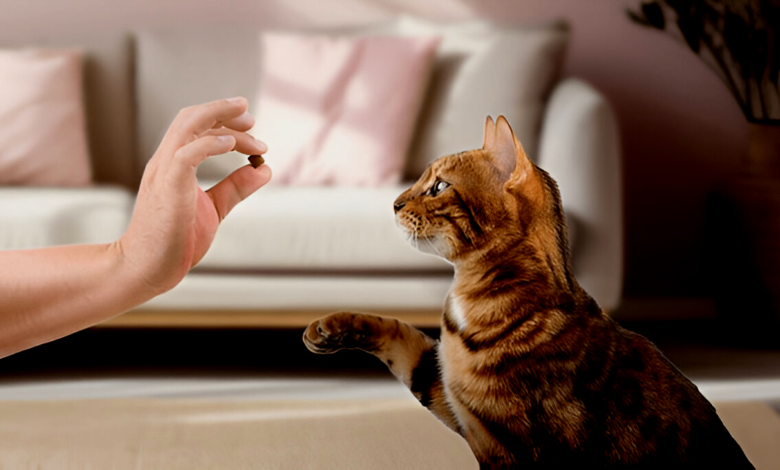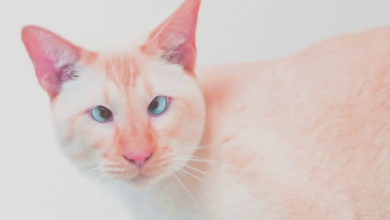
Cat Training Techniques That Work Oregon’s Feline Behavior Guide
Cat training techniques that work Discover Oregon's best feline behavior guide for a happier well-trained cat Learn positive reinforcement methods today.
Cat training techniques may seem like an oxymoron to those who believe felines are untrainable, but Oregon cat owners know better. With patience and the right methods, even the most stubborn cats can learn good manners and even impressive tricks. Unlike dogs, cats respond best to positive reinforcement and respect for their independent nature. In Oregon, where many cats enjoy both indoor comforts and outdoor adventures, understanding feline behavior is key to successful training. This comprehensive guide explores proven strategies to address common behavioral issues, teach useful commands, and strengthen the bond between you and your feline companion.
From discouraging furniture scratching to leash training for safe outdoor exploration, this guide covers all aspects of feline education. We’ll delve into why cats behave the way they do, how to communicate effectively with them, and which training methods yield the best results. Whether you’re dealing with a mischievous kitten or set in their ways senior cat, these cat training techniques will help create a harmonious home. By the end of this 4000-word guide, you’ll have a thorough understanding of how to shape your cat’s behavior while respecting their unique feline nature.
Cat Training Techniques That Work Oregon’s Feline Behavior Guide
Understanding Feline Psychology and Behavior
Before attempting to train your cat, it’s essential to understand what motivates them. Cats are not small dogs they’re solitary hunters by evolutionary design, which makes them fundamentally different in how they perceive and interact with the world. Their behaviors, often misinterpreted as aloofness or spite, are actually natural expressions of their instincts. Scratching, for instance, serves multiple purposes: it maintains claw health, stretches muscles, and marks territory through both visual signs and scent glands in their paws.
Essential Tools for Effective Cat Training
Every successful training program begins with the right tools. A clicker, small enough to fit in your palm, serves as an excellent marker for desired behaviors. The distinct clicking sound, followed immediately by a treat, helps cats make clear associations between actions and rewards. High-value treats are crucial something your cat goes crazy for, reserved exclusively for training sessions. Soft, smelly treats often work best, as cats respond strongly to potent aromas.
Fundamental Training Techniques for Cats
Clicker Training Basics
Clicker training stands as one of the most effective cat training techniques for teaching commands and tricks. The process begins with “charging” the clicker clicking and immediately giving a treat, repeated until your cat associates the sound with rewards. Start with simple behaviors like touching a target stick or following a lure. For “sit,” hold a treat slightly above and behind your cat’s head; as they look up, their bottom naturally lowers. The moment it touches the floor, click and treat.
Litter Box Training and Troubleshooting
While most cats instinctively use litter boxes, problems can arise from medical issues, stress, or box dissatisfaction. Oregon’s climate can affect litter performance, so experiment with different types unscented clumping litter generally works best. The box should be large enough for your cat to turn around comfortably, placed in a quiet but accessible location. Scoop daily and completely change litter weekly.
Managing Scratching Behavior
Scratching serves vital functions for cats, so the goal should be Cat Training rather than elimination. Observe where and what your cat prefers to scratch horizontal or vertical surfaces, carpet or wood and provide appropriate alternatives nearby. Sisal-covered posts satisfy most cats’ scratching needs. When you catch your cat scratching furniture, calmly redirect them to the approved surface and reward them for using it.
Addressing Common Behavioral Challenges
Excessive Vocalization
While some breeds like Siamese are naturally talkative, sudden increases in vocalization may signal underlying issues. First rule out medical causes with a veterinary visit. If health isn’t a concern, evaluate your cat’s environment. Oregon’s long winter nights may leave indoor cats restless consider interactive toys or food puzzles to provide mental stimulation.
Intercat Aggression in Multi-Cat Households
Oregon’s love of animal companionship often leads to multi-cat homes, which can create territorial tensions. Proper introductions are crucial new cats should initially be kept separate, with scent exchange through bedding before visual contact. Cat Training multiple resources (food bowls, litter boxes, sleeping areas) to reduce competition.
Advanced Training and Enrichment
Leash Training for Outdoor Adventures
Many Oregonians want to share their outdoor lifestyle with feline companions safely. Leash training begins indoors with getting your cat comfortable wearing a harness. Start with short sessions, gradually increasing duration as your cat adjusts. Let them drag the leash under Cat Training before you attempt to hold it.
Teaching Impressive Tricks and Skills
Beyond basic commands, cats can learn impressive tricks that showcase their intelligence. With patience, you can train your cat to Jump through hoops. Turn lights on and off. Fetch small toys. Use human toilets (though many veterinarians recommend against this due to stress factors). Navigate agility courses. The key lies in breaking complex behaviors into small, achievable steps and consistently rewarding progress. Some Oregon cat owners have even trained their felines to assist with small tasks like retrieving dropped items proving that with the right cat training techniques, the possibilities are nearly Cat Training.
Creating an Enriched Indoor Environment
For Oregon cats who live strictly indoors (recommended in urban areas), environmental enrichment prevents boredom and associated Cat Training problems. Rotate toys weekly to maintain novelty. Food puzzles turn mealtime into mental exercise. Window perches with bird feeders outside provide entertainment. Some cats enjoy watching cat-friendly videos.
When to Seek Professional Help
While most behavioral issues respond to consistent cat training techniques, some situations warrant professional intervention. Sudden behavior changes may indicate medical problems requiring veterinary attention. Certified feline behavior consultants can help with Severe Cat Training. Extreme fearfulness. Persistent litter box avoidance. Compulsive behaviors like excessive grooming. Many Oregon veterinary clinics have behavior specialists on staff or can provide referrals. The Oregon Humane Society also offers behavior resources for cat owners facing particularly challenging situations.
Read More: Pet Healthcare Plans in Florida: What’s Covered and What’s Not?
Conclusion
Effective cat training techniques transform the myth of the untrainable feline into a reality of harmonious coexistence. By understanding and working with your cat’s natural instincts, using positive reinforcement, and maintaining patience, you can shape behaviors that make life better for both of you. Oregon’s unique environment from rainy Portland apartments to rural Cat Training presents both challenges and opportunities for creative training solutions.
Remember that every cat learns at their own pace. Cat Training small victories and never punish natural feline behaviors. With time and consistency, your training efforts will build trust and deepen the bond with your cat. Whether you’re teaching basic house manners or impressive tricks, the journey of training strengthens your relationship and provides mental stimulation essential for your cat’s wellbeing. In the end, a trained cat isn’t just better behaved they’re happier, more confident, and more engaged with their human family.
FAQs
How old should a cat be before starting training?
Kittens can begin simple training as young as 8 weeks, but cats of any age can learn new behaviors with patience and the right motivation.
Why does my cat respond to training sometimes but not others?
Cats are highly sensitive to their environment and Cat Training. Factors like hunger, distractions, or stress can affect their responsiveness during sessions.
Are some cat breeds easier to train than others?
Yes, breeds like Abyssinians, Bengals, and Cat Training tend to be more food-motivated and people-oriented, making them generally more receptive to training.
How often should I train my cat?
Short sessions of 2-5 minutes, 2-3 times daily work best. Cats have limited attention spans and respond better to frequent, brief training.
Can I train my cat to stop biting during play?
Yes, immediately stop play when biting occurs and redirect to Cat Training toys. Never use hands as toys, and reward gentle play with treats or praise.







